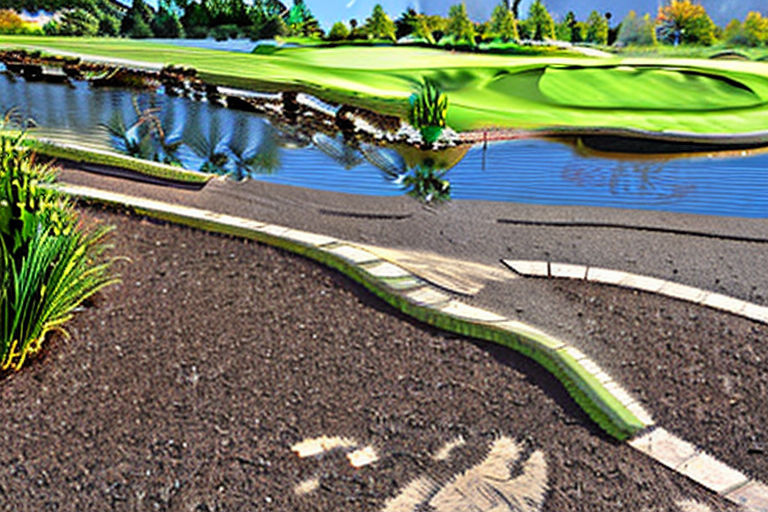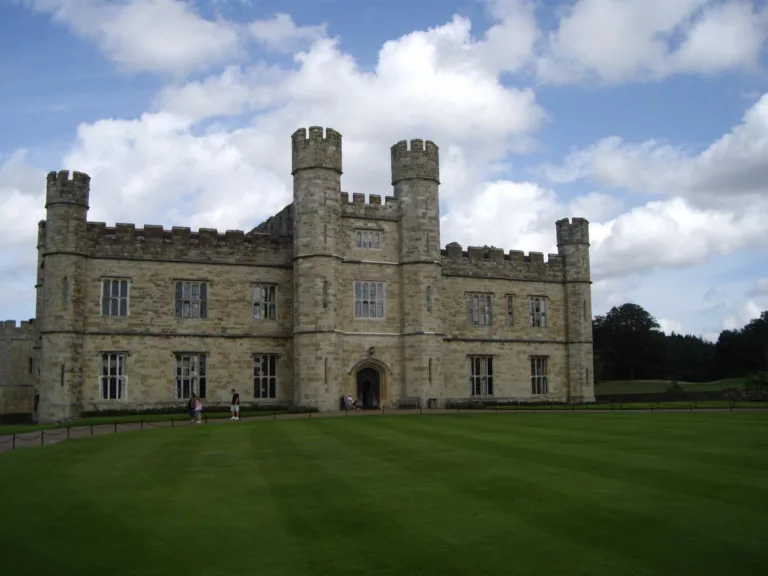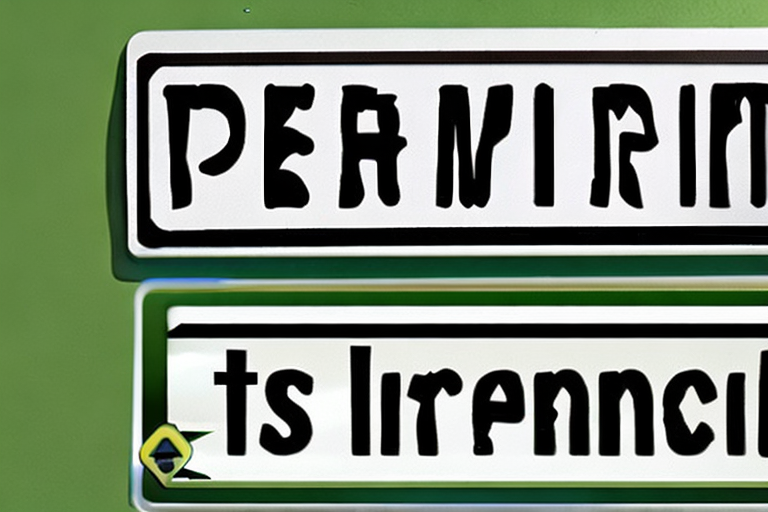Golf Course Design: From Course Planning to Greenkeeping
Golf course design is a complex process that requires an understanding of the many components that make up an ideal course. From the initial planning stages to the greenkeeping and landscape maintenance, there are numerous steps involved in creating a great golf experience. So, what does it take to design and maintain an enjoyable golf course? Read on to find out!
Planning Your Golf Course Design
Planning Your Golf Course Design starts with understanding your need and goals for the course. You’ll also want to take into account the local environment and any special regulations or rules that may be in place. Once you have a good understanding of what you’re trying to achieve, you can begin planning the layout of the course. There are many different factors to consider when designing a golf course, such as terrain, hazards, distances, and required club shots.
Budgeting for Golf Course Design is important before starting any construction work on your golf course. Costs associated with design and construction vary greatly depending on the size, location, and features of the course. It’s a good idea to consult with an experienced professional when planning your budget so that you don’t end up overspending or cutting corners that may compromise the quality of your finished product.
Landscape Considerations in Golf Course Design can include everything from natural elements like trees and bunkers to man-made features like tee box locations and green complexes. Dabei muss nicht nur während design, sondern throughout all phases of construction a careful attention must be taken to ensure that the landscape remains consistent throughout the entire project.
Understanding The Rules And Regulations Of Golf Courses is essential if you plan on building or maintaining a golf course yourself. Many local municipalities have their own set of rules regarding where courses can be built (and sometimes even how they must be designed), which requires close attention to detail during every phase of development. Failure to comply with specific regulations could lead to costly fines or even shut downes of your course altogether!
Selecting Greens With The Right Soil Type & Turfgrass Variety is another key aspect of successful golf course design. Green complexity (the number and type of greens) plays a significant role in determining how players will play each hole – making it important to choose greens that are both challenging and fun at different times throughout the round! A wide variety turfgrass varieties are available today which offers better player satisfaction due to their ability provide various levels o
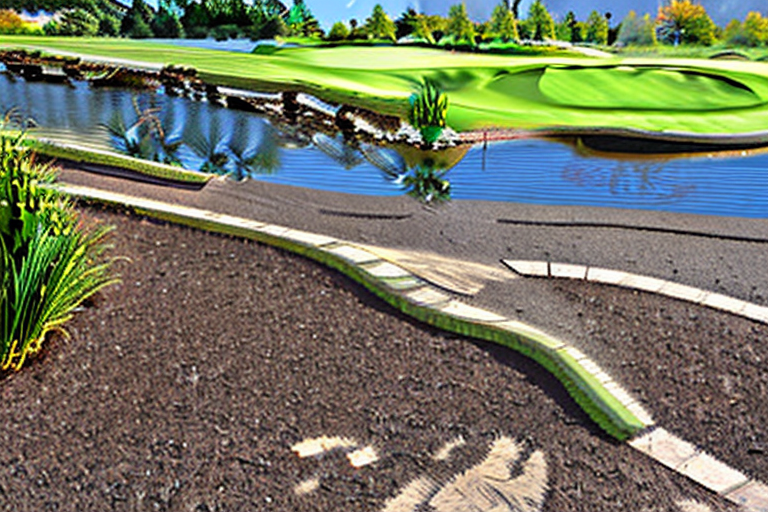
Budgeting for Golf Course Design
Budgeting for golf course design can be a daunting task, but with the help of some helpful guidelines it should not be difficult to create a budget that meets your specific needs. First and foremost, remember that the amount you spend on a golf course design is one factor in determining its overall cost. Other factors include the size and type of course, complexity of features, number of holes, and length of round. A pro shop, clubhouse, driving range, practice greens (if applicable), tees and greens fees all contribute to the final price tag. Keep in mind that many things–from club rentals to fertilizer–can easily increase costs without warning.
Once you have gathered accurate figures detailing your project’s scope and desired features, begin creating an outline budget based on these items. As always it is important to consider potential hidden expenses as well as necessary provisions for long-term maintenance or repairs. Once you have created your rough estimate for total project costs, review each item again with a GAO (Governmental Accounting Office) mindset in order to weed out any unnecessary spending before finally approving your budget document. Be sure to keep updated records documenting all changes made along the way so there will be no discrepancy upon completion!
Landscape Considerations in Golf Course Design
One of the most important aspects of golf course design is landscape. A well-landscaped course will provide a pleasing environment for players and help to improve the overall experience of playing golf. Here are some tips for landscaping a golf course:
-
Consider the natural features of the site.
-
Use plants that are native to the area.
-
Plan for water features and drainage systems.
-
Choose plants that will provide shade and shelter.
-
Create a variety of habitats, including shrublands, meadows, and forests.
-
Choose plants that will enhance the appearance of the course turf and fairways.
Understanding the Rules and Regulations of Golf Courses
There are a number of things to consider when designing a golf course, including the rules and regulations of the sport, the terrain, and the needs of the players. In this section, we’ll discuss some of the key considerations for golf course design.
One of the first things you’ll need to do is determine the dimensions of your course. You’ll need to account for distances between holes, as well as width and height of each hole. You’ll also need to decide on the number of tees and greens. Once you have these dimensions, you can begin to plan out your layout.
One of the most important factors when designing a golf course is to take into account the wind. You’ll need to design your course in such a way that it doesn’t cause any problems for players. You can do this by choosing holes that are away from areas that are prone to strong winds. Additionally, you’ll want to make sure that all fairways are level so that players don’t have to adjust their shots based on elevation changes.
Another important consideration when designing a golf course is drainage. You’ll need to make sure that all areas around your holes are able to drain properly. This will help keep your course clean and free from water hazards.
Finally, it’s important to consider player comfort when designing your course. You’ll want to make sure that all areas are well-lit and free from obstructions. Additionally, you should make sure that all surfaces are easy to walk on.
Selecting Greens with the Right Soil Type & Turfgrass Variety
Assessing Site Conditions for Turfgrass Selection
Selecting greens with the right soil type and turfgrass variety is an important part of golf course design. Soil type is a key factor in determining how the green will play, while turfgrass variety can affect how the green looks and feels.
The type of soil on a golf course can have a big impact on how the green plays. Sandy soils are bouncy and cause shots to go high, while clay soils are slow-moving and cause shots to go low. The type of turfgrass on a golf course can also have an impact on how the green plays. Bermuda grass is a good choice for sandy soils, while bentgrass is a good choice for clay soils.
Site conditions are also important when selecting greens. Assessing site conditions for turfgrass selection is important because different types of turfgrass grow better in different types of soil and weather conditions.
Examining the slope of the land, the type of vegetation present, and the amount of rainfall that has occurred in the area can assess Site conditions.
Developing a Soil Testing Plan
When designing a golf course, it is important to take into account the site conditions and available turfgrass varieties in order to create a playable and visually pleasing layout. When selecting greens, the designer must consider a variety of factors such as substrate type, water availability, slope, wind sensitivity and expected use. In addition to soil testing in specific areas (described below), a course planner often uses aerial photos or GPS data to help make informed decisions about turfgrass selection.
Soil Type:
The type of soil on the golf course can determine which turfgrass varieties will grow best. Soils that are sandy or gravelly are more forgiving of drainage issues than soils that are clay based or heavy with rocks content. Many times, golf courses with sandy or gravelly soil will opt for Bermuda grass as the preferred turfgrass due to its ability to tolerate a broad range of soils. On the other hand, courses with clay based soil can often benefit from Kentucky bluegrass as it is very tolerant of heavy soils.
Water Availability:
A course’s water availability plays an important role in determining which type of turfgrass will be best suited for the site. Many times, golf courses are built on flood plains or near bodies of water and require turfgrasses that are drought tolerant. Turfgrasses such as Fescue, Bent Grass and Zoysia Grass are usually good choices for these types of sites because they can handle low rainfall levels while still providing good performance.
Slope:
Slope also plays a role in turfgrass selection. A course with a gentle slope can often be designed with a variety of turfgrasses, while a course with a more challenging slope may require a specific type of turfgrass. On a course with a gentle slope, Bent Grass or Zoysia Grass can be used, while on a course with a more challenging slope, Bermudas or Kentucky Bluegrass may be better choices.
Wind Sensitivity:
Golf courses can be very windy places and certain turfgrasses are better suited for these conditions than others. Turfgrasses that are sensitive to wind include Fescue, Bent Grass and Zoysia Grass. On the other hand, Bermudas and Kentucky Bluegrass are usually better choices for courses that don’t experience a lot of wind.
Soil Test:
A course planner may also use soil test results to help make informed turfgrass selection decisions. A soil test can determine which type of turfgrass should be planted in that area. In addition, soil test results can help identify any potential drainage problems on the golf course.
Understanding Ideal Turfgrass Varieties and Their Requirements
Golfers want courses with well-maintained fairways and greens, but the right type of soil is also essential to creating a lush playing surface. A proper course design begins with a soil testing plan that identifies the specific needs of the turfgrass variety being used. Understanding ideal turfgrass varieties and their requirements is key to selecting Greens with the Right Soil Type & Turfgrass Variety.
There are both warm climate and cold climate turfgrasses, each requiring slightly different conditions in order to thrive. Warm climate grasses like bentgrass require full sun exposure while cold climate grasses like Perennial Ryegrass need partial shade. It’s important to find out what type of green space your course occupies so you can plan your course accordingly. If the course is in a dense urban environment, for example, bentgrass may not be the best choice because it doesn’t do well under heavy traffic.
Once you have determined the specific needs of the turfgrass variety being used, you can assess your current site to determine what type of soil is needed. Recognizing common soil types and their requirements will help in selecting Greens with the Right Soil Type & Turfgrass Variety.
Chaque two or three years should also perform Soil tests to monitor amendments and changes in soil composition. By understanding how turfgrass grows and thrives, golfers can create courses that are both visually appealing as well as playable for years to come.
Utilizing Cultural Practices to Optimize the Health of Greens
Golf course greens are an important part of any golf course. They must be maintained in order to provide a playable surface for golfers. The type of turfgrass, the variety of turfgrass, and the soil type used in the greens must be chosen carefully in order to provide the best playing experience for golfers.
The type of turfgrass used on a golf course is determined by the type of soil that is present. Soil types can be classified as sandy, clay, or heavy clay. Sandy soils are easy to work and are good for most types of turfgrasses. Clay soils are harder to work and are better suited for Kentucky bluegrass, which is the most common type of turfgrass used on golf courses. Heavy clay soils are the worst type of soil for turfgrass and are best suited for Bermuda grass, which is a type of grass that is not commonly used on golf courses.
The variety of turfgrass used on a golf course is also determined by the type of soil. Kentucky bluegrass is the most common type of turfgrass used on golf courses. Kentucky bluegrass can grow in most types of soil, but it does best in sandy soils. Bermuda grass can also grow in most types of soil, but it does best in clay soils.
Cultural practices can be used to help optimize the health of greens. These practices include mowing the greens at a height that allows the roots of the turfgrass to reach the soil, watering the greens at a rate that allows the turfgrass to soak up water, and fertilizing the green at a rate that allows the turfgrass to absorb nutrients.
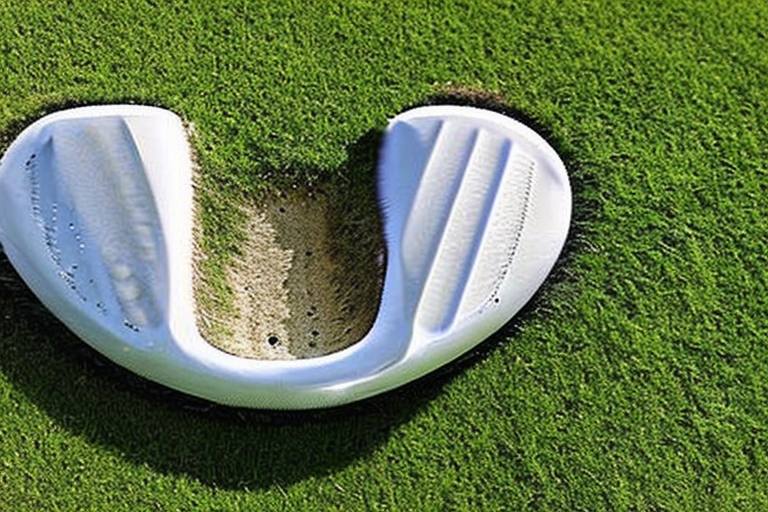
Choosing Appropriate Fairway Grasses and Turf Alternatives
Evaluating Turfgrass Varieties for the Fairways
There are many factors to consider when designing a golf course, including the terrain, the layout, and the desired atmosphere. One of the most important considerations is the type of grass that will be used on the fairways.
A variety of grasses can be used on golf courses, each with its own benefits and drawbacks. Some of the most common types of grasses used in golf course design are bentgrass, fescue, and Bermuda grass.
Bentgrass is a type of grass that is very durable and can withstand a lot of wear and tear. Bentgrass is usually used on golf courses designed for high-level play, as it provides good traction and stability for players. Bentgrass is also good for slowing down the movement of water and debris on the course, which is beneficial for maintaining a clean and playable environment.
Fescue is a type of grass that is native to North America and Europe. Fescue has a thick root system that can withstand acidic soils, making it a good choice for courses designed in areas with poor soil conditions. Fescue also holds up well under foot traffic, making it an ideal choice for golf courses that are heavily used by players.
Bermuda grass is one of the most popular types of grass used on golf courses worldwide. Bermuda grass grows very quickly and requires little care making it an ideal option for golf courses planned to be open to the public. Bermuda grass is also resistant to many types of pests and diseases, making it an ideal choice for courses that are maintained by professional golfers.
Assessing Climate and Soil Type Requirements of each Variety
When planning a golf course, one of the most important decisions is choosing the type of turfgrass to be used. There are many varieties available at different prices and each has its own set of benefits and drawbacks. Some of the most popular types include bluegrass, fescue, bentgrass, quinvitex and ryegrass.
Before making a selection, it is important to evaluate several factors, including climate and soil type. Each variety is best suited for specific conditions so it is important to understand these requirements before making a purchase. Additionally, fairway grasses can vary in their resistance to pests and diseases so you’ll need to consider this factor when selecting a lawn as well.
Selecting Alternative Turf Types for Challenging Areas
The design of a golf course presents many challenges, including the selection of appropriate fairway grasses and turf alternatives for challenging areas. In order to properly design a golf course that meets the needs of all players, it is important to first understand the climate and soil types of the area.
Ensuite, il faut évaluer the amount and type of precipitation in the area. Fairway grasses react differently to wet or dry conditions, so it is necessary to choose an option that will suit all types of terrain. For example, fescue does well on wet surfaces while bentgrass performs better in drier conditions.
Lastly, when selecting turf types, other factors such as slope grade and roughness must be taken into account. If a slope is too steep, for example, turf may not be able to withstand heavy wear. Similarly, if the rough is too rough, golfers may struggle to hit the ball straight.
Overall, a golf course designer must consider a variety of factors when designing a course that will meet the needs of all players. By carefully selecting the appropriate fairway grasses and turf alternatives, you can design a course that is both visually appealing and playable for all players.
Implementing a Comprehensive Fertilization Program
Choosing Appropriate Fairway Grasses and Turf Alternatives
In order to provide a playable golf course for all levels of golfer, it is important to select an appropriate fairway grass and turf alternative. Choosing this type of surface must be considered many factors, including the course’s layout, condition, slope and prevailing weather conditions. The following sections will discuss each of these topics in more detail.
Layout: A golf course’s layout can play a significant role in which fairway grasses and turf alternatives are selected. courses with tight fairways usually benefit from tough, dense greensides that require tougher turf types than those found on courses with wider fairways that need softer turf for protection.
Condition: A golf course’s condition also affects which fairway grasses and turf alternatives are selected. courses in poor condition may require more aggressive turf types that can handle heavy traffic and wear, while courses in better condition may be able to use softer, more forgiving turf types.
The slope of a golf course also affects which fairway grasses and turf alternatives are selected. courses with a steep slope will need tougher turf types to handle the increased wear and tear, while courses with a more gradual slope may be able to use softer turf types.
Weather Conditions: The prevailing weather conditions also play a role in which fairway grasses and turf alternatives are selected. courses that are subject to heavy rain or snowfall may need tougher turf types to handle the extra moisture, while courses that are only occasionally wet or snow-covered may be able to use softer turf types.
A comprehensive fertilization program should be implemented to provide the best playing conditions for golfers of all levels. This program should include applications of fertilizer and herbicides at critical times during the growing season, as well as watering by either open sprinkler system or drip irrigation techniques.
Working with Water Resources for Irrigation Systems
When constructing a golf course, it is important to take into account potential hazards that may occur during rounds of play. By identifying potential hazards and taking appropriate precautions, you can provide a safe and enjoyable playing experience for your players.
Some common hazards on a golf course include water hazards (such as deep bunkers or waterfalls), trees and other obstructions in the fairway, and rough. It is important to consider the location of each hazard when planning your layout, so that players will not surprise them on their round.
To avoid these dangers, it is also helpful to keep an eye out for weather conditions that could affect play. For example, high winds can blow objects off the course or change the trajectory of balls hit into windy areas. Likewise, heavy rain can cause flooding in certain areas of the course and make playing conditions hazardous.
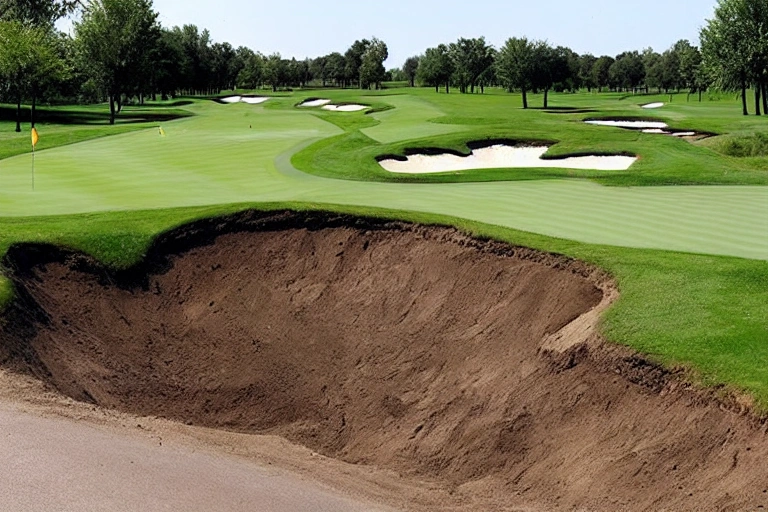
Identifying Potential Hazards on the Course and Avoidance Strategies
It is important to identify potential hazards on the golf course and take appropriate precautions when playing. Some hazards that could occur on a course include water hazards, trees, bunkers, and other natural elements. When planning your layout, be sure to consider these potential dangers so you can play safely. Additionally, ensure proper greenkeeping practices are in place to maintain the course’s appearance and prevent damage from
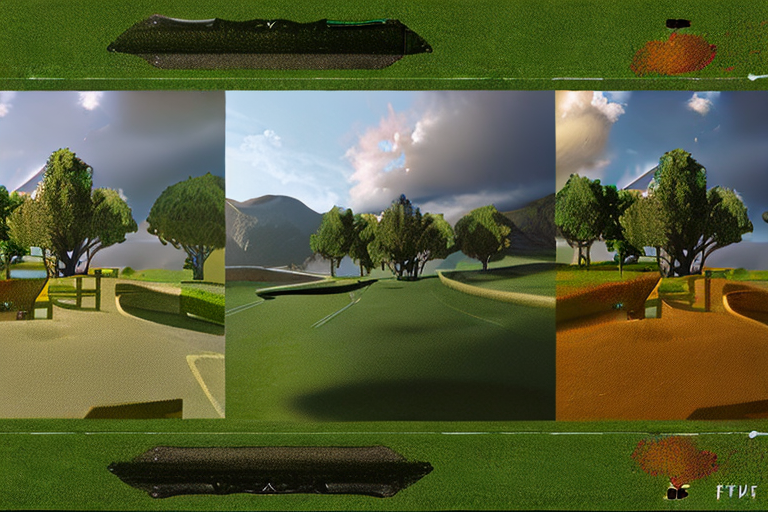
Creating Tee Boxes that Enhance Players’ Experiences During Rounds
Golfers should design Tee boxes to provide a comfortable playing experience. By taking into account players’ abilities and preferences, tee boxes can be designed to make the game more enjoyable for everyone.
When designing tee boxes, it is important to consider the following factors:
- Length of the hole
- Number of holes on the course
- Player skill level
- Terrain on the course
- Aesthetics of the course

Utilizing Trees, Bunkers, and Other Natural Elements in Golf Courses
In order to create a golf course that is both visually pleasing and playable, it is important to consider the elements of design. One important consideration is the layout of the course itself – making sure each hole presents an interesting challenge. Additionally, it is important to carefully select the type and quality of greens, fairways, and tees. A good course must be designed as well. By taking these various factors into account during design, you can ensure that your golfers will enjoy every round they play!
Developing Professional-level Practice Facilities at Your Course
One of the most important aspects of designing a golf course is ensuring that the greens are in top condition. Proper green care can make a huge difference in player satisfaction and enjoyment. Here are some tips for keeping greens in top condition:
- Regularly mow the grass to a height of 2-3 inches.
- Water the grass only when it is really dry, and avoid watering during hot, sunny days.
- Fertilize the grass only when it is necessary, using a low-nitrogen fertilizer that is specifically for golf courses.
- Do not over-water the greens; allow them to dry out between waterings.
- Avoid using pesticides or other chemicals on the greens.
Establishing Effective Greenkeeping Practices
Generally, the type of golf course being designed depends on effective greenkeeping practices at a golf course. Generally speaking, three types of courses can be distinguished: links courses, traditional layouts, and modern layouts.
Links Courses
Wide fairways often have many undulations that challenge players from all distances. They usually require more maintenance than other types of golf courses because they are in close proximity to water features, which can cause erosion and flooding. For this reason, it is essential to choose proper soil types for the ground and surface layers, monitor moisture levels carefully, and use water wisely when necessary. In order to maintain greens Keep them well mowed (down to 1/8th inch), fertilize every six months during active growth season (late March through May), and apply a dormant oil or fertilizer treatment in winter if there has been no recent activity.
Traditional Layout Courses
Traditional layouts feature narrower fairways with numerous obstacles such as sand traps and ponds that can create slippery surfaces in bad weather conditions. They also tend to have more gentle slopes than Links courses making them easier for beginners to play without feeling overwhelmed or intimidated. To make these layouts playable year-round, it is important to evenly distribute sand over the entire course using a rotating auger system before play begins so that balls will not get stuck in obstructions along the way. Additionally, remove accumulated snow midway through the winter so that playing conditions are consistent all season long Management Tips: Maintain Fairway texture using an aerator prior to overseeding; include Bent Grass turf varieties within design parameters where appropriate; irrigate strategically throughout summer months; avoid overhead watering on mornings of high demand
Golf course design is both an art and a science, requiring creative minds and skill sets to transform land into impressive courses. With the right planning, budgeting, landscape considerations, rules knowledge, turfgrass selection, water systems management and greenkeeping practices in place, golf courses can become awe-inspiring destinations for lovers of the game all over the world. For more information on similar topics related to golf course design and development please visit us at [INSERT WEBSITE]. Thank you for taking this journey with us!

